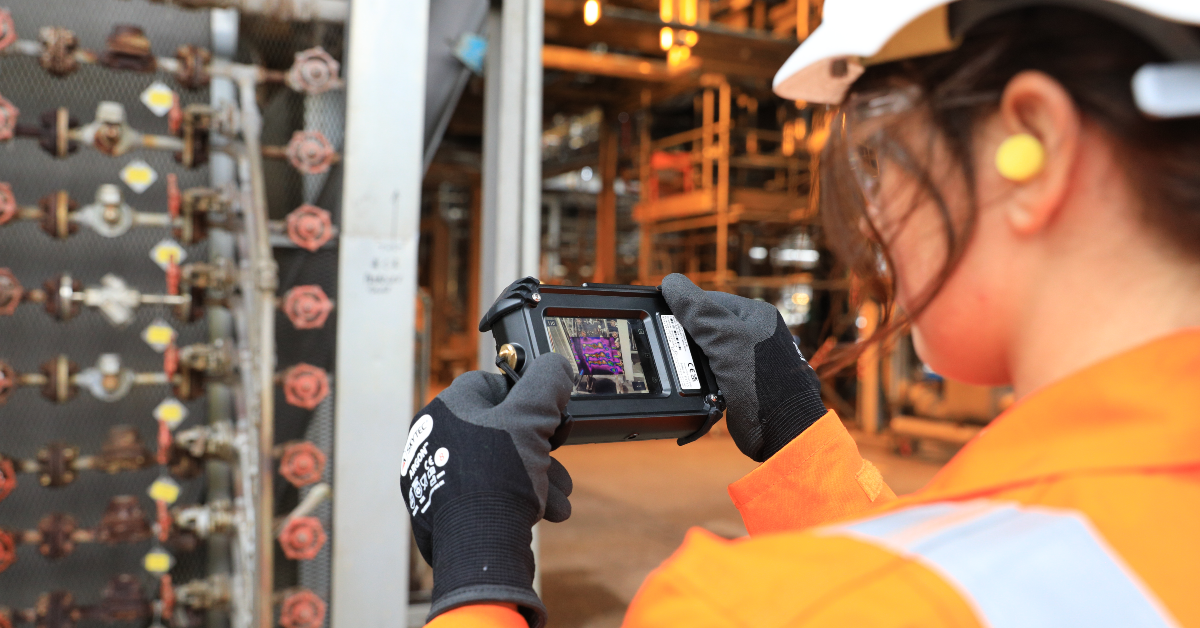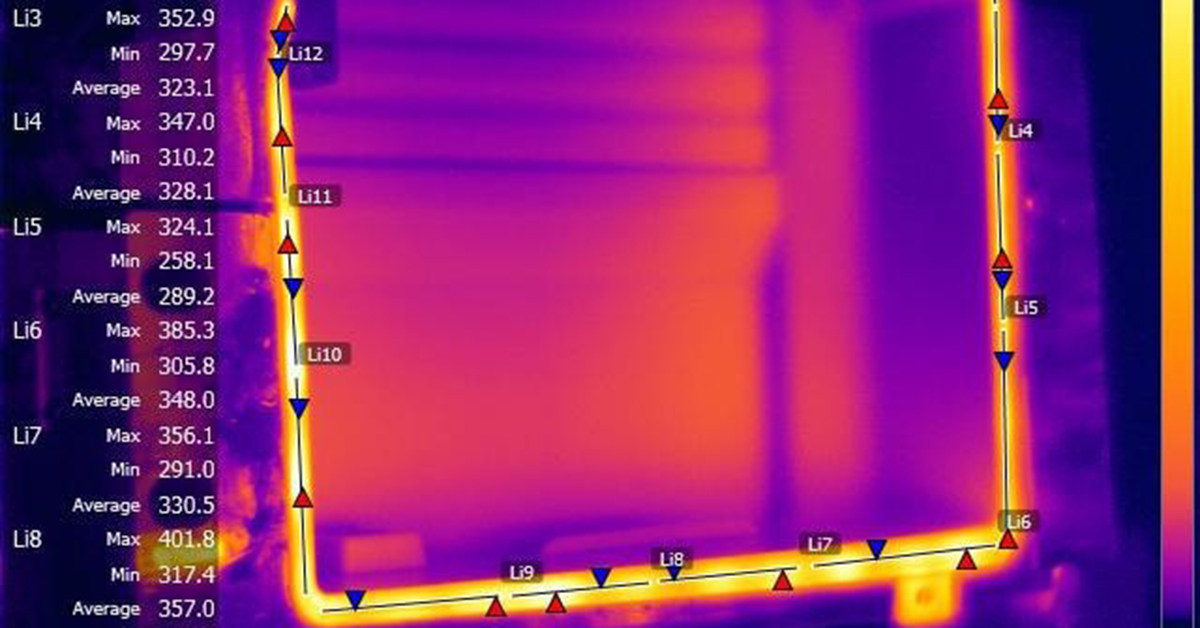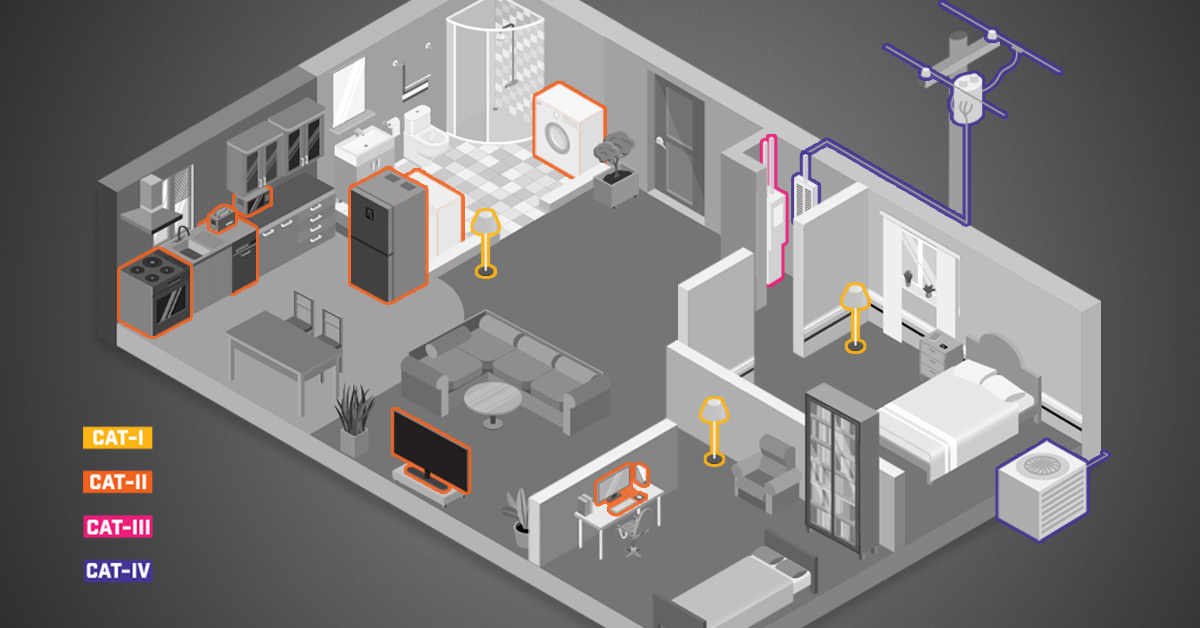How The FLIR Cx5 Fits Into Classified-Area Inspections

Thermal inspections don’t always take place in the safest environments. At natural gas burning sites and gas liquification plants, the danger of sudden combustion is always looming, so maintaining worker safety is paramount. Potentially dangerous areas require specialized, classified area-rated equipment to prevent disaster: FLIR’s Cx5 Hazardous Location-Rated Thermal Camera is just the tool for the job.

What is the danger?
Performing a thermal inspection on a gas site is about the same as your average inspection, with electrical panels, motors, bearings, pumps, and insulation materials being your usual targets. The difference, though, is the presence of combustible gas in the area that must be treated with respect by those on site.
On a gas-present site, tools not intended for use in classified areas could potentially ignite the fumes in the air and cause a disastrous explosion. Something as small as a loose connection or a tiny spark during battery insertion is enough to cause ignition. That's why gas burning sites go to such great lengths to ensure device safety. Sites such as these disallow battery changes within hazardous zones and require the use of specialty equipment, batteries that register below a certain voltage, and inspections of an area prior to admitting any visitors.
Natural gas burning facilities
Any facility that makes use of natural gas and gas by-product, such as a petrochemical facility that uses fired heaters, is going to have an array of equipment and connections that will all need regular inspection. Gas burning sites will often use three- to four-story furnaces with various pipes joining to pump combustions gases and collect acid and by-product gas. In certain cases, natural gas sites can burn gas and hydrogen non-stop for three to five years at a time in these pressurized outdoor furnaces.
Gas sites heavily line their furnaces with insulation materials, as internal temperature can reach up to 1500 degrees Celsius and an exterior temperature of around 300 degrees Celsius. Even with protective insulation, running at such high temperatures for such extended periods of time no doubt creates wear and tear. As a furnace’s insulation wears down, it will need to burn more gas to maintain heat and keep its regular process up. The more gas a site needs to burn, the more money it uses up.
Gas liquification plants
Gas cooling plants will take offshore natural gas and cool it to -24 degrees Celsius into a liquid form for easier handling and transport. The cooling process requires huge refrigeration complexes that are constantly circulating the liquid gas to keep it at a cool temperature. Storage silos are then used to heavily insulate the liquid. If the liquid gas inside starts to warm up, it then begins to expand and could rupture the container. If that happens, a small spark in the area would be enough to trigger a devastating explosion.
Where the Cx5 comes in
Furnace insulation requires frequent inspections, which can be performed easily with a FLIR Cx5 thermal camera. With this light-weight camera, you can easily walk around equipment and discover hot spots and signs of degrading insulation. The camera is pocket-sized so it’s easy to carry around inspection sites, but its durable, protective case means you don’t worry about damage should you drop it.

The Cx5 is easy to use and carry around inspection sites.
The real advantage of the Cx5 is the IEC rating, which may eliminate the need for hot work permits while on site. When using non-rated equipment in a hazardous environment, the onsite electricians must inspect your product first and the approval process must be started two weeks before its use—with a total of around four hours of work over the course of the two weeks before a visit. Even after all of that, products that aren’t rated must meet very specific requirements to even be considered for use on site due to the risk of catastrophic fallout.
The FLIR Cx5 can be a true time-saver, meeting the requirements of hazardous areas without added permits. Its tough enclosure prevents any potential ignition inside from entering the atmosphere. The Cx5 doesn’t just bring safety, it lets you to easily equip your team with thermal imagers fit for a hazardous site while potentially allowing you to skip a lengthy approval process.
The Cx5 is certified IEC Ex IIC T4 II Gc II 3 G and Ex tc IIB T135°C Dc. In the USA, Article 501 of the National Electrical Code (NEC) gives you the option of using the Zone system [Art. 505] instead of the Division system [501.2]. Therefore, it is your choice whether to accept tools that meet this standard for your facility. Complete certificates are available at flir.custhelp.com.


